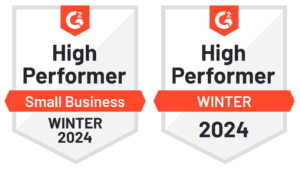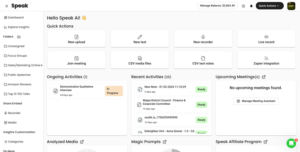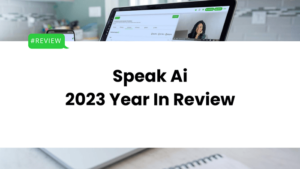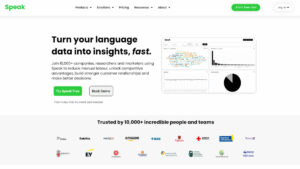
What's New In Speak - April 2024
Interested in What's New In Speak February 2024? Check out this post for all the new updates available for you in Speak today!
Focus groups are an invaluable tool for businesses, marketers, and researchers. They give us an opportunity to gather qualitative data from a group of people that represent our target market. However, if not done correctly, focus groups can be a waste of time and money. Below is a comprehensive guide to focus group best practices, so you can make the most of your research.
The success of a focus group starts with the right participants. You want to select people who have the expertise and experience relevant to your research. You may also want to consider factors such as age, gender, and socioeconomic status to ensure diversity in the group.
The facilitator of the focus group is just as important as the participants. They should be someone who is well-versed in the topic and can ask the right questions to get the most out of the group. The facilitator should also be comfortable with leading the discussion and keeping the group on-task.
Before the focus group takes place, make sure to set an agenda. This should include the topics to be discussed, how the group will work together, and how much time should be spent on each topic.
Before the focus group begins, make sure to provide clear expectations. Explain what you want to get out of the group and how the data will be used. This will help the participants understand the importance of their input and keep them engaged.
Focus groups can be intimidating. To help alleviate any anxiety, make sure to create a comfortable and welcoming environment. Provide snacks and beverages, ask the participants to introduce themselves, and make sure everyone feels comfortable enough to share their opinion.
When asking questions, make sure they are open-ended and not leading. This will give the participants an opportunity to express their thoughts and feelings without feeling like they are being manipulated.
Make sure to collect the data from the focus group. This can be done through audio or video recordings, surveys, and written notes. This will ensure that you have a comprehensive and accurate report of the focus group.
Once the data has been collected, analyze the results. Look for trends and patterns and draw conclusions from the data. This will help you understand the opinions and thoughts of the participants and make informed decisions.
This is especially where our software platform Speak comes in handy. Upload your focus group recordings, transcribe and analyze them, and automatically generate valuable insights, visualizations, and assets you can use in reports and presentations.
By following these best practices, you can ensure that your focus group is productive and successful. Focus groups give you an opportunity to gather qualitative data from a group of people that represent your target market. However, if not done correctly, they can be a waste of time and money. Hopefully, this guide has helped you understand the importance of focus group best practices and how to get the most out of your research.
Get a 7-day fully-featured trial.


Interested in What's New In Speak February 2024? Check out this post for all the new updates available for you in Speak today!

Interested in What's New In Speak February 2024? Check out this post for all the new updates available for you in Speak today!

Interested in What's New In Speak February 2024? Check out this post for all the new updates available for you in Speak today!

Thank you for continuing to be part of this journey - it means the world to us. Below is a summary of our 2023 at

Interested in The Best Executive Research Firms? Check out the dedicated article the Speak Ai team put together on The Best Executive Research Firms to learn more.

Interested in The Best Consumer Research Firms? Check out the dedicated article the Speak Ai team put together on The Best Consumer Research Firms to learn more.

Powered by Speak Ai Inc. Made in Canada with
Use Speak's powerful AI to transcribe, analyze, automate and produce incredible insights for you and your team.